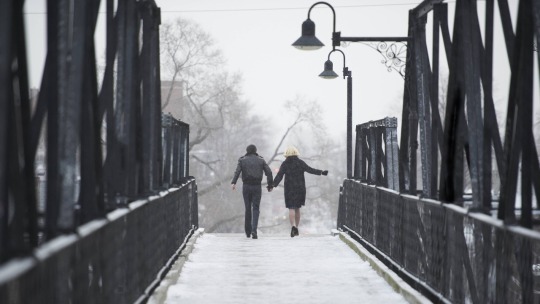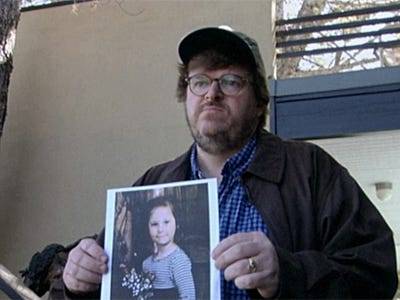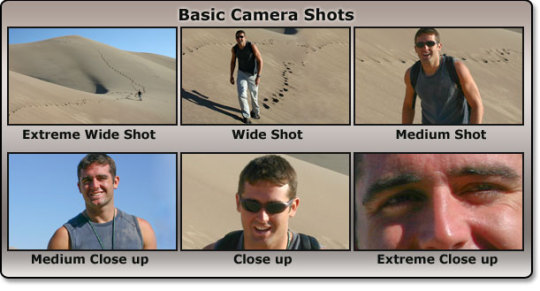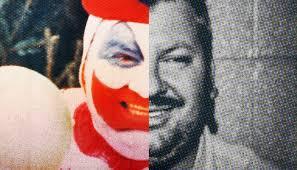Don't wanna be here? Send us removal request.
Text
Media Blog Post 2
Beyond the Headlines: The Watts Family Tragedy
A familiar name many remember making headlines, this documentary about the Watts family looks into the tragedy that shook American households across the country. Police body cam footage, security footage, interrogation footage, and interviews with Shanann Watts’ friends and family tell the story of the murders of Shanann Watts and her two daughters. This documentary gives a brief background on how well loved Shanann was and the activities of her daily life, then gets into the disappearance of Shanann and her daughters, and finally looks into the behavior of Chris Watts as he is interviewed by police and is widely suspected by many for hurting his family.
This documentary utilizes many forms of types of footage, including interview footage, news footage, interrogation room footage, police body cam footage, and some b-roll of reenacting events. This really strengthened the documentary because there were so many different forms of footage that presented information well, but also kept the viewers interested. It also helped to accurately tell the story because it was real footage, demonstrating the real ways that Chris Watts was behaving, which creates a strong argument from the documentary. Especially the interrogation room footage, watching Chris Watts take the lie detector test, and the ways in which he broke down and behaved, allowed the viewer to see the full picture and story. Though, it could question ethics because Chris Watts didn’t necessarily know there was a camera on him at that point.
As Jill Godmillow writes in “Kill the Documentary, As We Know It”, documentaries can reinforce beliefs about certain people or cultures, which this documentary follows. Going into this documentary, the audience knows that Chris Watts murdered his family and went to prison for it. That piece of information alone impacts the way the audience digests the documentary, and it impacts the way we view certain shots or pieces of information the filmmakers decided to put into the documentary. For example, the footage of Chris Watts talking to police after looking at his neighbor’s security footage, there is a shot of his neighbor giving a reaction to that by saying, “He’s behaving wierdly”. Adding this in reinforces the audience’s belief about Chris Watts that he is guilty. Further, there is footage of him giving an interview talking about how he just wants his wife and children to come home, and then it cuts to the interviewees saying “he is emotionless” and that “After that interview, I knew he had something to do with Shanann and the kids being missing.” Once again, this piece of footage reinforces the belief that Chris Watts was guilty. It’s purpose is similar to “Stories We Tell” in the way that it is trying to get to the bottom of a suspisioin. In “Stories We Tell”, the filmmaker is trying to get to the bottom of who her father is, and in this documentary, they are trying to get to the bottom of what happened to Shanann Watts and her children, and whether or not Chris Watts had anything to do with this. The way both filmmakers have several interviewees giving their accounts and perspectives also serves the purpose of trying to get to the bottom of what happened.
0 notes
Text
Writing and Introducing Camera Shots and B-Roll (A Reflection Looking Back)
In high school, I took AP Lang and AP Lit, giving me experience with both research writing and creative writing. This helped a lot with my Vignette Research Narrative, as I was able to gather relevant sources using the library, pulling from peer-reviewed journals, and more recent sources, understanding how to use in-text citations and cite these sources, etc. I also have peer-reviewed in these classes, so that helped with the assignment we did, helping others to revise and edit their VRN. The creative writing aspect of the VRN also came naturally because I have written similar writing pieces in AP Lit, using sensory language, dialogue, inner thoughts, really descriptive passages, etc. My background knowledge of research and creative writing really made it a smooth process to write the vignette and the research. However, I had never blended the two genres together, so that took some time to figure out, and it still feels unnatural to do.
Furthermore, I have encountered a lot of new material that I was not familiar with before starting this class.��I have never taken a documentary class, and before this class, I had zero knowledge about camera shots or b-roll which I have learned a lot about these past few weeks. The documentary we watched in class “Stories We Tell” used a lot of B-roll, and it demonstrated how effective B-roll can be when you do it right. Sarah had so many good shots of her mother and family interactions which helped to connect the viewer and engage the audience more. I think B-roll can tell a story without saying anything, if you engage your viewer enough, and the B-roll is relevant, it will help the audience to grasp the concept seamlessly. B-roll can act as a transition between interviews and dialogue, but it is still meant to add to the story. In the “Bowling for Columbine” documentary, Michael Moore uses B-roll in a different way but still effectively. It almost adds comedic irony, as the camera is following him around. It takes a break from really heavy topics and gives the viewer a break, but also still adds to the story as Michael Moore goes to interview a leader of the NRA and leaves a picture of a gun violence victim outside his house.


Additionally, I learned many different types of camera shots. In the “Basic Camera Shots for Filmmaking” video, I was introduced to the wide shot, full shot, mid shot, medium close up, close up #1, close up #2, extreme close up, dutch angle, low angle, low angle #2, high angle, pan angle, cut in, over the head, tilt, dolly zoom, over the shoulder, medium two shot, over the shoulder #2, medium two shot #2, and over the shoulder #3. I’m not entirely sure yet how to make this happen on a camera, but an awareness of what the different types of shots are will help me to decide what options I have in my documentary, and it can also help with the storyboard assignment that’s coming up soon.

0 notes
Text
Conversations With A Killer: The John Wayne Gacy Tapes

A notorious name everyone recognizes, the story of John Wayne Gacy's murders is told, intertwined with real audio from the interrogation room. Interviews with the families of the missing boys, the investigators, attorneys, and other people related to Gacy give their accounts of what happened in the '60s and '70s. There is a short amount of background on Gacy, describing his life in Waterloo and Chicago, emphasizing his successful career in food service. His blue-collar lifestyle is described, seemingly a family man, married with kids, but under that facade, he spent time “contracting” young boys for work. He struggled with his homosexuality and ultimately assaulted and murdered many young boys. The story follows investigators looking for evidence, trying to connect Gacy to these young boys that disappeared, while Gacy tries everything to deny he had anything to do with these boys.
Just as Bill Nichols writes, this documentary taps into our predispositions and emotions that us as viewers already have about John Wayne Gacy. Most people already know the story or know of him, so it’s easy for the writer to frame the story to make the viewer feel sympathy for the victims, and make Gacy look like a monster. After watching the documentary, that ‘sickening’ feeling is intensified toward Gacy’s actions. Every time a picture or video of him is shown in the documentary, our predispositions enable us as viewers to feel a sense of horror when seeing or hearing him.
Further, this documentary utilizes an important element that Jill Godmilow discusses. The music used in the documentary completely sets the tone for what is going on at the moment in the documentary. The music is very eerie and creepy when families of victims are recounting their last seeing the victim, or when the documentary talks about Gacy’s anger and odd behaviors. Especially when the tape recordings are playing of Gacy recounting events, the music incorporates creepy violins. It creates a lot of suspense and discomfort, shaping the way the viewer processes the information they are receiving. Further, sometimes the music would change to something more upbeat. For example, when Gacy’s defense attorney was being interviewed, he started talking about Chicago, as Gacy lived there for a while, and the music became jazzy and more upbeat. It set the scene of what Chicago was like at that time.
The camera shots are also really interesting. When interviewing people in the present time that were involved in the case in the 70s, the shots are clear and focused. However, when the story is told, talking about events that took place in the 60s and 70s, the shots are “old-timey”, and more blurry. When investigators talk about the events that took place at Gacy’s house, the camera shot actually becomes distorted, creating an uneasy feeling.
It’s also really interesting that whenever real audio from interviews with Gacy are used, there’s a shot of an older tape recorder playing, sitting in a prison cell. It’s like the essence of Gacy is always going to be in prison, even after death.
There are also a lot of words displayed throughout the documentary. As the timeline goes on for investigators, the date is put on the screen, so the viewer feels as though they are living the events as they happen. There are also newspaper clippings shown on the screen, in which articles were written about the missing boys and articles written about Gacy. It again feels like the viewer is able to live the events as they happen. There are also police logs or logs from places Gacy was at, which allows the viewer to see the “evidence” that the police officers were seeing at the time. All of these things allow the viewer to feel closer to the story and feel like they are really living these series of events.
youtube
1 note
·
View note